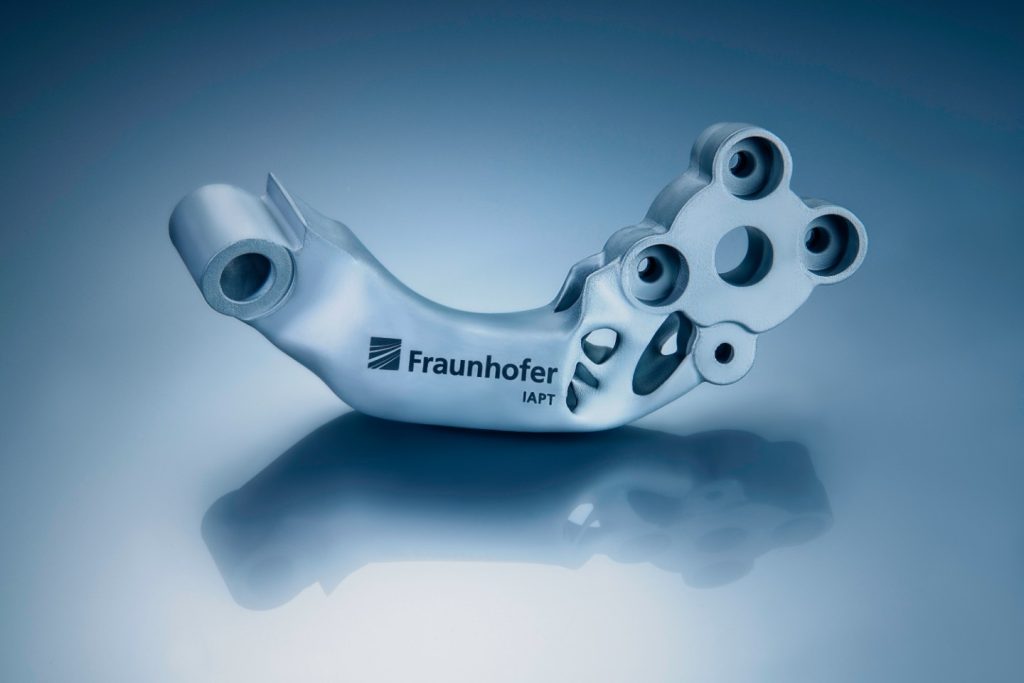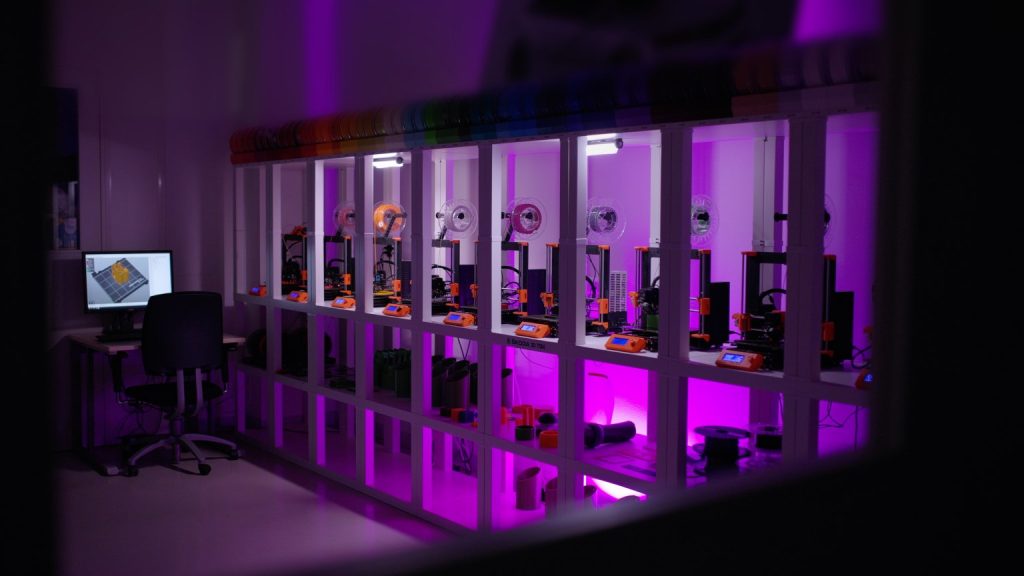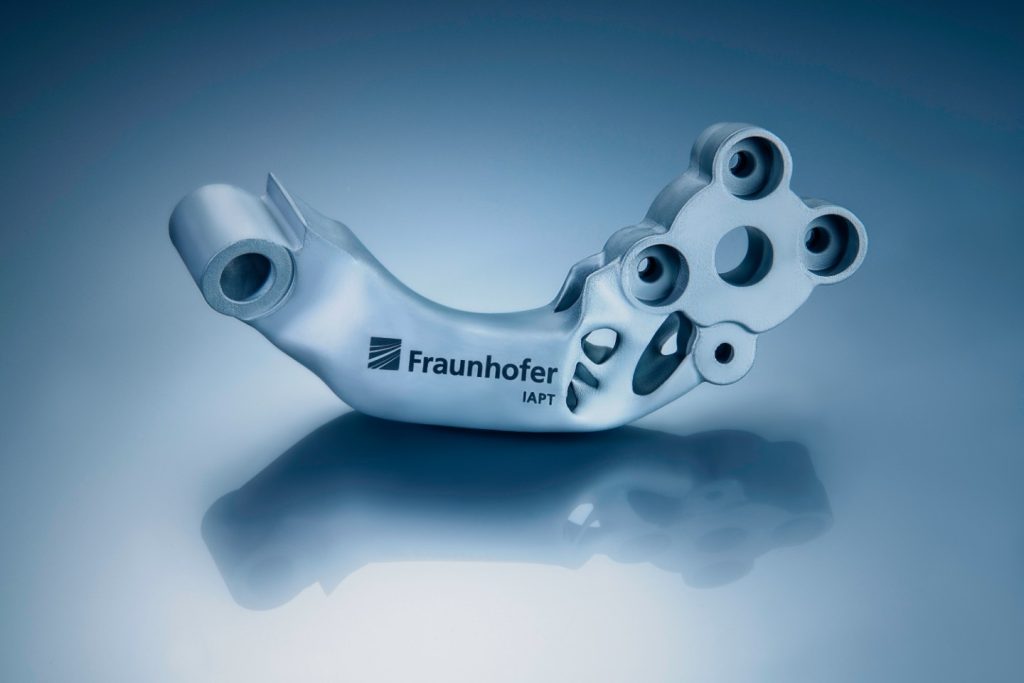Insiders and analysts predict the 3D printing trends to watch in our latest series of articles focused on the future of 3D printing.
The Fraunhofer Institute for Additive Production Technologies (IAPT) has demonstrated how 3D printing can provide benefits for both technical performance and manufacturing costs by redesigning the door hinge of a luxury sports car.
The part redesign project saw IAPT’s engineers optimize everything from the geometry of the door hinge to the build orientation and process parameters in a bid to maximize cost and weight savings.
Ultimately, the work was intended to shine a light on the not-so-obvious factors that influence the costs of 3D printed parts, beyond just the geometry of the components themselves.
According to IAPT, the results of the project bode well for series production in the automotive sector, where 3D printing is increasingly being used in day-to-day operations.

Streamlining automotive production
The automotive sector is one of many that have adopted additive manufacturing over the years, utilizing the technology for all manner of applications. However, many of the use cases thus far have been limited to low volumes, since 3D printing just doesn’t yet offer the throughput of conventional automotive production techniques – not while maintaining low costs per part. As such, the Fraunhofer project could suggest that the technology as a whole is currently underutilized in automotive, with higher-volume series production applications still on the horizon.
The first of the established use cases is in rapid prototyping, as the R&D phase of new car models can take anywhere up to five years. During R&D, several part prototypes will inevitably be developed and tested, meaning there’s a need for rapid design iterations with minimal lead times: one of additive manufacturing’s main selling points.
Carmakers are also 3D printing manufacturing tooling such as jigs and fixtures, aiding with the production and assembly workflow. There’s even a potential application in aftermarket parts that were once cast but are now obsolete. The dynamic and flexible nature of 3D printing enables part providers to print on demand, eliminating the need for physical component inventories altogether.
Just last month, sports car manufacturer Porsche made an undisclosed strategic investment in 3D printer manufacturer INTAMSYS in a bid to explore more ways in which 3D printing can be deployed in its own manufacturing operations. Porsche stated that it sees 3D printing as an “integral part” of future digital manufacturing technology and is therefore deserving of “long-term and continuous” input.
Elsewhere, Czech car manufacturer Škoda recently announced that it’s been using 3D printing to enhance its own workflows, bringing the production of prototypes, spare parts, and tooling in-house. As part of its ‘More flexible with 3D print farms’ project, the firm has set up a number of print farms featuring systems developed by companies like Prusa.

A 3D printed door hinge
Before commencing any design work, the Fraunhofer engineers used part screening software developed by 3D Spark, an IAPT spin-out, to identify a suitable automotive component for the demonstration study.
In the early stages of the project, the team first determined the most cost-efficient orientation of the component in the build chamber. The engineers took into consideration the support structures that would be necessary, as well as the number of parts they could fit into a single build. This initial orientation optimization step led to cost savings of 15% when compared to a 3D printed build without such considerations.
Next up was the topological optimization of the hinge arm itself. By shaving away unnecessary material and only reinforcing the sections of the part required by the simulated force flow, the engineers were able to reduce the weight of the hinge arm by 35%. The subsequent material savings and shorter print time resulted in further cost savings of 20%.
The Fraunhofer team also calculated the additional cost savings associated with reduced post-processing (from reducing support structures) and selecting the optimum metal powder material for the job: 10% each.
Interestingly, the study found that even the build parameters used in the 3D printing process lent themselves to potential cost savings. For instance, thicker layers, faster scan speeds, and deformation of the laser beam profile all contributed to a shorter build time, slashing printing costs by another 15%.
Ultimately, this cost-focused design approach enabled the IAPT engineers to 3D print the hinge with a huge 80% cost reduction when compared to a 3D printed counterpart without the same optimizations. When compared to a CNC milled counterpart, the project yielded cost and weight savings of 50% and 35%, respectively.
Subscribe to the 3D Printing Industry newsletter for the latest news in additive manufacturing. You can also stay connected by following us on Twitter, liking us on Facebook, and tuning into the 3D Printing Industry YouTube Channel.
Looking for a career in additive manufacturing? Visit 3D Printing Jobs for a selection of roles in the industry.
Featured image shows the 3D printed car door hinge. Photo via Fraunhofer IAPT.
